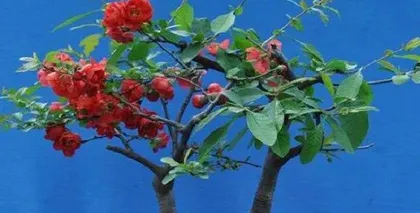Abstract:
Begonia is one of China's traditional famous flowers. Its charming flowers and beautiful posture make it an ideal courtyard flower for many people. However, caring for begonias requires some skills. Let's learn about the care methods for begonias during their flowering period together.
Begonia is one of China's traditional famous flowers. Its charming flowers and beautiful posture make it an ideal courtyard flower for many people. However, caring for begonias requires some skills. Let's learn about the care methods for begonias during their flowering period together.

I. Location Requirements
A suitable environment is key to begonia growth. Begonias prefer environments with sufficient light, good air circulation, appropriate temperature, and fertile soil. When selecting a planting location, these factors need to be fully considered.
II. Soil Fertility
Begonias have high requirements for soil. The pH level, nutrient content, and permeability of the soil directly affect the growth of begonias. When cultivating begonias, choose fertile, well-draining soil and add nutrients in a timely manner.

III. Water Management
Proper watering is essential for healthy begonia growth. During the flowering period, avoid overwatering or underwatering, which may affect normal blooming and development. You can touch the soil to feel its moisture level to determine if watering is needed.
IV. Fertilization Notes
Begonias need timely fertilization during their flowering period to ensure full development and blooming. When fertilizing, do not apply too much; moderate amounts are sufficient. Organic fertilizers and compound fertilizers are recommended to meet the various growth needs of begonias.
V. Pest and Disease Control
During the flowering period, attention must be paid to preventing various pests and diseases to avoid affecting normal growth and blooming. Biological agents and chemical products can be used for pest and disease control, and regular cleaning and shaping of begonias should be performed.

VI. Pruning Methods
Correct pruning methods are key to maintaining the beautiful shape of begonia trees and promoting normal blooming. When pruning begonias, pay attention to timing and methods to avoid excessive damage to the plants. It is recommended to prune after the flowering period ends.
VII. Temperature Control
Begonias have high temperature requirements and need proper environmental temperature control to prevent adverse effects from excessively high or low temperatures. Shading and spraying can be used to regulate temperature.
VIII. Weed Removal
Weed growth occupies large amounts of soil nutrients and water, affecting the normal growth and development of begonias. Weeds need to be regularly removed to keep the soil around begonias clean and breathable.
IX. Wind Protection and Root Stabilization
During the flowering period, attention must be paid to wind protection and root stabilization to prevent begonias from toppling or breaking due to strong winds. Support and fixation methods can be used to enhance the stability of begonias.
X. Maintaining Air Circulation
Maintaining good air circulation can effectively reduce the incidence of diseases in begonias and promote healthy growth. Conventional ventilation and thinning can be used to increase air flow around begonias.
XI. Light Exposure
Begonias love sufficient light, but overly intense sunlight can adversely affect them. Choose an appropriate location when planting and provide shading treatment in a timely manner.
XII. Irrigation Amount
The irrigation amount should be controlled within an appropriate range to avoid harm caused by excessive or insufficient water. Irrigation can be adjusted according to different stages of the flowering period.
XIII. Timely Repotting
Begonias grow quickly. After the flowering period ends, they need to be repotted in time. Repotting can effectively promote growth and blooming, while also preventing overcrowded roots.
XIV. Timely Trimming of Dead Branches
After the flowering period ends, dead branches need to be trimmed promptly to maintain the beautiful shape of begonia trees and promote growth. During trimming, avoid excessive pruning to prevent affecting normal blooming and growth.
XV.
There are many details to pay attention to when caring for begonias during their flowering period. However, by following the correct methods, you can create a charming garden. We can care for begonias from multiple aspects such as location selection, soil fertility, water management, and fertilization. At the same time, we need to pay attention to pest and disease prevention, temperature control, and other details to ensure that begonias grow healthily and bloom beautifully.